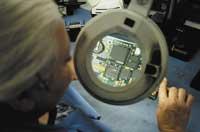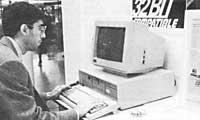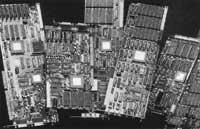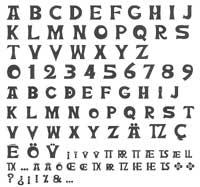Old news
2002/09/01 Imaz Amiano, Eneko - Elhuyar Zientziaren Komunikazioa Iturria: Elhuyar aldizkaria

Many of the current advances and benefits are based on technology development. But this technology, and especially computing, is innovating very fast, perhaps too fast. Any computer tool ceases to be a leader immediately, although obsolete systems cannot be said to be bad.
Although NASA has been a technology generator in many things, it seems that fast speed also affects it. In fact, lately he is engaged in exploring online auctions. Objective: to find and acquire microprocessors and pieces of hardware that some 10 years ago are obsolete. Not of course to make a computer museum that would reflect the rapid speed of electronic advances, no. Because you are running out of spare parts for your systems. Let the system update! But he doesn't seem to like that opportunity much.
One of the things NASA likes and needs most is the 8086 chip. This chip, or 8088, was used on personal computers created in 1981 and designed for 1979. Then it was almost unknown and only had 8 bits.

From these chips the x86 series is created. A year later Intel created the 16-bit 80286 (or 286). He could have worked as 'Protected', so the software could exceed 640 kb. However, the only way to go back was to restart. Finally, in 1985 Intel created the 80386 processor, first used on computers in 1986. It already had 32 bits, so you could use several programs at once. The chips of the Pentium line that are currently used are the following and, although they have greatly accelerated the speed, they remain 32 bits and many of the basic instructions are the same as those of 386 and 486.
But let's go back to 8086. In 1981, with the launch of the first ferry, Columbia, the 8086 chip was used to control the safety of the two propulsion rockets. In 1986, when the Challenger ferry already exploded in space, they investigated to find out the cause and attributed the blame to a rocket board. They stopped the flight program and redesigned several systems, but 8086 was not ruled out.
Today, despite the last two decades, 8086 are used. Moreover, NASA plans to carry out an automatic analysis system of 37 million dollars, with new hardware and software totally new, but also intends to use 8086 for this. Now, NASA's problems have begun when no one currently manufactures 8086 chips. That's why they're exploring internet auctions and other places.

Dig hard. Recently the alternative circuit to the unit used to ensure the synchronization of the ferry computers was searched. They found it expensive and paid $500. But cheap, according to NASA, having a technician working for a week is more expensive.
But quiet, if in the house camera you have an old computer do not start calling NASA, do not buy pieces to private individuals, only to those who have large quantities.
Normally, when the US government buys complex systems, study and repair services are guaranteed in the contract itself. In the case of ferries, however, this type of planning was not carried out considering that the maximum duration would be a decade. However, current ferries expect them to remain until 2012 (if they solve the problems they have encountered on the outer decks in the last month) and, if possible, from 2020. If you already have difficulties, don't look for easy chip work!
NASA is not alone
But don't think NASA is the only one using old chips. Many aircraft fly with the Intel 80386 or 386 from 1986. This chip is the one used in the automatic guide, although it would hardly boot Windows 95.

The truth is that this chip works very well, has shown that it is reliable for years and does not get too hot. “The computer software for residing at the International Space Station and for station maintenance also uses 386. These computers are used in space flights and are very resistant (…). It would take several years to make a new computer to withstand the harsh conditions of space flights.”
Many reservoirs and nuclear power plants also use this chip.
In short, changing the chip is not just that, as the whole system depends on it. Changing the microprocessor involves changing all the software and if a system works correctly it is more recent, but if it can give unknown problems, its replacement by a system can be very expensive, both economically and for the problems that may arise. Because, as computer scientists say, “if it works well, don’t try to fix it.”

Gai honi buruzko eduki gehiago
Elhuyarrek garatutako teknologia





